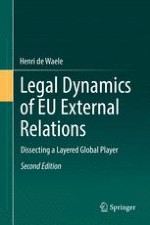2017 | OriginalPaper | Buchkapitel
8. Special Relationships in the European Neighbourhood and Beyond
verfasst von : Henri de Waele
Erschienen in: Legal Dynamics of EU External Relations
Verlag: Springer Berlin Heidelberg
Aktivieren Sie unsere intelligente Suche, um passende Fachinhalte oder Patente zu finden.
Wählen Sie Textabschnitte aus um mit Künstlicher Intelligenz passenden Patente zu finden. powered by
Markieren Sie Textabschnitte, um KI-gestützt weitere passende Inhalte zu finden. powered by
